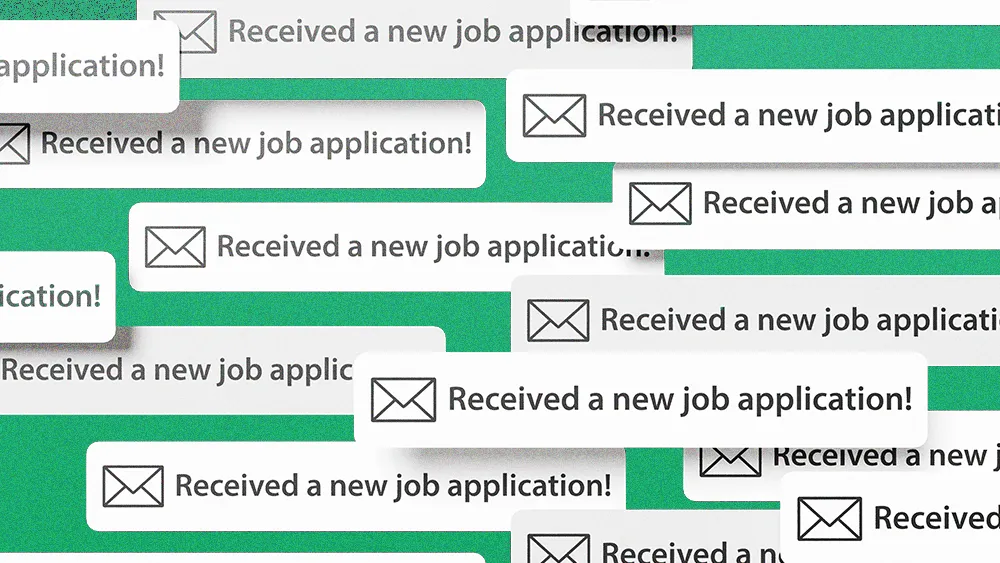‘Quiet Cracking’ is the new Quiet Quitting, exposing deeper workforce power shift

Key Points
TalentLMS introduces “Quiet Cracking,” a term for workplace dissatisfaction leading to disengagement and a desire to quit.
Over half of employees experience Quiet Cracking, contributing to $8.8 trillion in lost productivity globally.
Lack of upskilling and unclear job expectations are major factors affecting long-term job security, but can be solved through supportive management and targeted development paths.
In a workforce still navigating lingering post-pandemic changes, the balance of power has largely shifted from employee to employer. While 2021/22 introduced “Quiet Quitting” to the mainstream discourse, this year many employees are experiencing what TalentLMS is calling “Quiet Cracking”.
An urge to quit: The new buzzword describes a persistent feeling of workplace unhappiness that leads to disengagement, poor performance, and a growing urge to quit. Though it differs from burnout because it doesn’t necessarily stem from exhaustion, HR Digest says that it can be a more pervasive “slow erosion” of satisfaction that’s easy to miss until it takes firm hold.
Lost productivity: Fresh data from TalentLMS’ March 2025 report shows over half of employees experience Quiet Cracking to some extent, with 1 in 5 stuck in it constantly or frequently. This hidden strain can be costly: Gallup research says disengaged workers worldwide rack up $8.8 trillion in lost productivity each year—or about 9% of global GDP.
Short on long term goals: Lack of upskilling appears to be a major culprit. Employees who haven’t received training in the past year are 140% more likely to feel insecure about their jobs, and although 82% feel stable in their current roles, only 62% believe in their longer-term future with the same employer. Informa’s CFO.com points out that advancements in automation (and AI!) could add to uncertainty for some middle managers, creating yet another area of concern.
Workers who say they’re quietly cracking are 29% less likely to have received recent training and 68% more prone to feeling undervalued. On top of that, 29% report unmanageable workloads, while 15% say they’re in the dark about what’s really expected of them on the job.
Supportive management: According to quotes highlighted by HR Dive, Nikhil Arora, CEO of TalentLMS’ parent company Epignosis, describes how giving employees space to grow through genuine learning and honest conversations “is one of the most powerful ways to turn things around.” Still, just being a “nice” or supportive manager can’t fix everything—companies must invest in targeted development paths and clearer roles to keep their people engaged. Quiet Cracking can raise turnover intentions, often going unnoticed in daily metrics. By the time performance data starts to dip, the morale damage is already done. So commitment over time makes all the difference.
Related articles
TL;DR
TalentLMS introduces “Quiet Cracking,” a term for workplace dissatisfaction leading to disengagement and a desire to quit.
Over half of employees experience Quiet Cracking, contributing to $8.8 trillion in lost productivity globally.
Lack of upskilling and unclear job expectations are major factors affecting long-term job security, but can be solved through supportive management and targeted development paths.
In a workforce still navigating lingering post-pandemic changes, the balance of power has largely shifted from employee to employer. While 2021/22 introduced “Quiet Quitting” to the mainstream discourse, this year many employees are experiencing what TalentLMS is calling “Quiet Cracking”.
An urge to quit: The new buzzword describes a persistent feeling of workplace unhappiness that leads to disengagement, poor performance, and a growing urge to quit. Though it differs from burnout because it doesn’t necessarily stem from exhaustion, HR Digest says that it can be a more pervasive “slow erosion” of satisfaction that’s easy to miss until it takes firm hold.
Lost productivity: Fresh data from TalentLMS’ March 2025 report shows over half of employees experience Quiet Cracking to some extent, with 1 in 5 stuck in it constantly or frequently. This hidden strain can be costly: Gallup research says disengaged workers worldwide rack up $8.8 trillion in lost productivity each year—or about 9% of global GDP.
Short on long term goals: Lack of upskilling appears to be a major culprit. Employees who haven’t received training in the past year are 140% more likely to feel insecure about their jobs, and although 82% feel stable in their current roles, only 62% believe in their longer-term future with the same employer. Informa’s CFO.com points out that advancements in automation (and AI!) could add to uncertainty for some middle managers, creating yet another area of concern.
Workers who say they’re quietly cracking are 29% less likely to have received recent training and 68% more prone to feeling undervalued. On top of that, 29% report unmanageable workloads, while 15% say they’re in the dark about what’s really expected of them on the job.
Supportive management: According to quotes highlighted by HR Dive, Nikhil Arora, CEO of TalentLMS’ parent company Epignosis, describes how giving employees space to grow through genuine learning and honest conversations “is one of the most powerful ways to turn things around.” Still, just being a “nice” or supportive manager can’t fix everything—companies must invest in targeted development paths and clearer roles to keep their people engaged. Quiet Cracking can raise turnover intentions, often going unnoticed in daily metrics. By the time performance data starts to dip, the morale damage is already done. So commitment over time makes all the difference.




